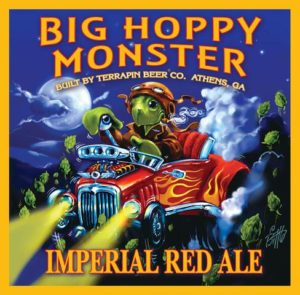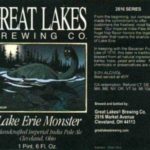 Are US holidays the most liquor laced of all? Not sure. But they sure are the most extended. I get the sense that nowadays* they just go on and on, one meeting the next at some sort of transition overlap. We seem to have all been in the HallowThanksChristEve zone for a while now and there are still weeks to go. Good thing I’m Canadian as we up here track time by following the sports calendar and the grain growing season cycles. Speaking of holidays, someone is not getting a bonus. Joe Stange shared an image of the aftermath of a disaster in Belgium. Look at that Westmalle, laughing at the Orval.
Are US holidays the most liquor laced of all? Not sure. But they sure are the most extended. I get the sense that nowadays* they just go on and on, one meeting the next at some sort of transition overlap. We seem to have all been in the HallowThanksChristEve zone for a while now and there are still weeks to go. Good thing I’m Canadian as we up here track time by following the sports calendar and the grain growing season cycles. Speaking of holidays, someone is not getting a bonus. Joe Stange shared an image of the aftermath of a disaster in Belgium. Look at that Westmalle, laughing at the Orval.
So what is going on out there? I liked this observation from The Beer Nut which could be applied to any number of things:
The best feature is the booze, delivering as it does a pleasant warming fuzziness, perfect for a miserable evening in mid-November. Overall, it’s fine, but not exactly high end, to my palate anyway.
And I came across a new mag worth checking out, Beer & Weed, out of area code 207 – aka the Great State of Maine aka the Canada of the USA. My favourite American second cousin in law Mike has an article in the December issue as does Carla Jean who offers some ideas for giving which go beyond the usual. Like taking a pal on a beer tour – or making an apple pie after soaking the apples in beer. I like that, a twist on mulled ale… or pastry stout. Think about that. Mmm…
Next – aside from my secret wondering whether it’s all an elaborate façade broadcast from a hidden Nordic mountain lair based on fantastic IT resources, access to private wealth and wicked sense of disruptive if extremely niche humour – Lars has once again produced an excellent thought provoking and well researched essay, this time pushing the history of hops back in northern Europe by more than a century or two, relying in large part on the unreliability of records:**
This, however, is the history you get from written documents, but hop usage began at a time when brewing was mostly something people did at home, for their own household, and almost none of what they did was ever recorded in writing. So we must expect that nearly all of the early history of hops has gone undocumented, and therefore we must turn to other sources of information to cast light on the early history of hops.
Personal note: this is exactly what my first beer experience in the late 70s were like. I’m a bit verklempt.***
I liked this very narrow study of Gary’s this week, a three piece article on something called Tipper Ale, a beer that relied on salt just as 1830s Albany Ale did. Except it wasn’t chucked into the barrel:
The key to the palate was use in brewing, or some use, of “brackish” water. The brewery was at a crossing, originally a drawbridge, over River Ouse near its mouth with the English Channel. Hence the seawater story is plausible, given location and typography. I cited various sources to this effect and there were others I didn’t, as all concur in result. One of the last sources, in 1941, was the most interesting I thought as it stated both regular and sea water was used.
One of my favourite discussions in the comments has to be the time back in 2008 when yeast scientists including a Dr Dunn and a Dr Sherlock took offense at being called “eggheads” and then embraced it. Well, the eggheads of yeast science were at it again this week with release of the news building on their work to explain… something:
It has been known for some time that S. pastorianus is a hybrid of two parents, one of which is S. cerevisiae (de Barros Lopes et al. 2002, Dunn and Sherlock 2008). However, the second parent, Saccharomyces eubayanus, was not isolated until 2011, from the Patagonian Andes in South America (Libkind et al. 2011)…. Regardless of when the hybridization(s) between S. cerevisiae and S. eubayanus occurred, they are likely to have occurred in Europe, and possibly in Bavaria. It is, therefore, surprising that no European isolates of S. eubayanus have been described… Here, we describe the discovery of the first European isolates of S. eubayanus. They were isolated from a university campus in Dublin, Ireland.
Excellent. And hardly any Irish inside jokes followed at all.
Andy Crouch marked the passing in early December of a New England brewing original, his pal Ray McNeill of Brattleboro, Vermont whose cantankerous nature was summed up neatly:
Ray was also legendary for his dislike of homebrewers. During one extended rant, he told me, “I don’t care what anybody says, there’s a big difference between making beer a few times a year in your garage and reading thousands of pages of technical literature and then making thousands of beers. Beer is a weird thing. It doesn’t come with a scorecard. If you’re a golfer and you shoot 112, you know that you suck. But if you’re a homebrewer and you make a third-rate beer, you probably think it’s great. A lot of homebrewers think they’re a lot better than they really are.” With Ray, you just never knew what you were going to get. And the same could always be said for his beer. The beer at McNeill’s was legendary: it would either be among the best you’d ever tasted or the worst. Consistency was not something anyone expected from McNeill’s and that was oddly part of the place’s charm.
Beth Demmons issued another great edition of Prohibitchin’ with the focus on Amie Ward and her project to make drinking establishment safer places:
“We [employees behind the bar] are in a very unique position because we are everywhere all at the same time. We hear everything, we see everything, we’re touching tables… we are in a perfect position to become those bystanders that really help change that landscape.” With this eye-opening knowledge and experience, Amie realized many other people weren’t able to manage health, stress, or sharing the responsibility of community safety in the same ways she had been able to hone over the years. “I saw my peers not taking care of themselves [and] really developing poor habits that were not going to suit them for the long haul,” she says. “That’s how I came up with the idea for The Healthtender: melding those two worlds together of wellness and hospitality.”
Turning to the end times, I used to post various noodly noddlings under the heading “This Is How Craft Will Kill Itself” from time to time and, in these fading days, it’s interesting to see how some predictions came to pass and how other factors I couldn’t have imagined contributed to the fall. For example, lack of differentiation posing as critical differentiation is a fatal flaw, as illustrated by this article:
“It’s a pretty neat thing when you go to a place that has a lot of beer selection. You’ll notice a huge variety of beer labels, and it is something that craft beer people look to,” said Scot Yarnell, brewer and owner of the downtown Earnest Brew Works location at 25 S. St. Clair St., Toledo. “They want a unique beer, flavor wise, and they also want a beer that has a unique look to it.”
There’s of course nothing unique about the look of what’s on the beer shelves these days any more than the identi-craft beer in the cans. Fadism gave birth to herd mentality homogeneity. Like gaudy late 1990s web design, there is a certain sort of vomiting bubble gum machine tone to the confusingly cartoony look that signals the trade friendly “blinders on” approach is engaged. But how does this help encourage the consumer – especially when mixed in with the continuing trade narrative’s reliance on tales based on amnesia, flat out untruths and revisionist bullshit mixed with earnest finger wagging over supposed myths that serves the residual wisdom of haut craft culture?**** Even those seeking the solace of knowledge in an honest off-flavour course offers an affirmation in the negative, as Jordan was good enough to admit:
Framed the off flavour training for next week’s class as “Well, you’re never going to be able to turn that switch off, so next week I’m going to ruin fully a quarter of the beer you’ll ever drink….”
Downer. No wonder the value proposition has gone all a’wobbly now in the face of these broader harder times. And no wonder things are as down, as Pete Brown shared in The Times. It’s a good read… but I am not sure I can agree with the proposed treatment as it looks like more of the same:
Refocusing on the aspects of “craft” that big corporations will always struggle to replicate could be key. “Local, independent craft breweries do far more than just make great beer,” said Richard Naisby, acting chairman of the Society of Independent Brewers. “They embed themselves in local communities, create jobs, and add value to the local economies they call home.”
Maybe. Could be. If you get rid of the phony and the baloney – and the kiddie cartoon profiteering prophets – and I also suppose if these fine locals have each paid their suppliers and the folk losing their jobs. Might be nice if enough of them just found a way to make great beer at a good price, frankly. Time to start talking about recession proofing, brewers. That might take a bit of change.
Speaking of which, an interesting and somewhat related call to arms crossed my eye in the course of me legal readings this week:
The Cannabis Council of Canada (C3) has called on the federal government to provide “immediate financial relief” for the legal cannabis industry and end the “stigmatization” of legal cannabis that allegedly limits progress on the key public health aims of legalization… According to C3, while the current framework has been “a financial success” for governments and provincial monopoly distributors who apply mark-ups, it has also been “a bloodbath” for investors of all sizes within Health Canada’s licensed producers and processors framework.
Hmm… dunno. Pretty sure I don’t want my tax dollars saving the less than half decade bubble economy of the Canadian grass trade. Think about it. Could it maybe just be that both craft and dope have to face the fact that there is no market for every investor who believed in a dream of easy cash from selling swanky new forms of intoxicants in each and every neighourhood? Is that what they mean by they “add value to the local economies they call home“?
I leave you there. That enough for now… you’ve had enough… take a break… when you’ve done that, please check out the updates from Boak and Bailey hopefully now again mostly every Saturday and also from Stan more now on a Monday than almost ever! Check out the weekly and highly recommented Beer Ladies Podcast. The OCBG Podcast is on a very quiet schedule these days – but it’s coming back soon. See also sometimes, on a Friday, posts at The Fizz as well (Ed.: we are told ‘tis gone to 404 bloggy podcast heaven… gone to the 404 bloggy podcast farm to play with other puppies.) And the long standing Beervana podcast (Ed.: which I have missed from this list for some unknown reason.) There is the Boys Are From Märzen podcast too and check out the travel vids at Ontario’s own A Quick Beer. There is a monthly sort of round up at The Glass. (Ed.: that seems to be dead now… nope, there was a post on July 25th… in 2022 even.) There is more from DaftAboutCraft‘s podcast, too. And sign up for Katie’s (Ed.: now very) irregular newsletter, The Gulp, too. And check out the Atlantic Canada Beer Blog‘s weekly roundup. Still gearing up, the recently revived All About Beer has introduced a podcast, too. (Ed.: give it a few weeks to settle in and not be as agreeable… not sure this went very far…) Plus follow the venerable Full Pint podcast. And the Craft Beer Channel this week on Youtube. Plus Fermentation Radio with Emma Inch. The AfroBeerChick podcast as well! And also look at Brewsround and Cabin Fever. And Ben has his own podcast, Beer and Badword (Ed.: …notice of revival of which has been given… still not on the radio dial…) And remember BeerEdge, too, and The Moon Under Water. There was also the Beer O’clock Show but that’s now gone after a ten year run… no, it is back and here is the link!
*Excellent usage, no?
**See from the archives “One Brewery and the Problem with Records” from 2015.
***h/t Cookie.
****Oxymoron.


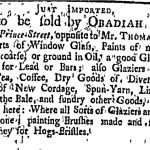




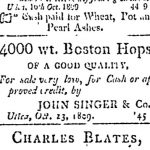

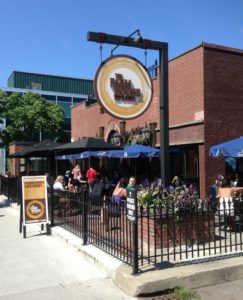 Back from the road. There is still time ahead away from work but my banker and I agree that we would do well to pull back from the Atlantic shore and pull into the driveway. Not that I am grumbling. It was the attack on marine life that I had been hoping for. Good restaurants are a training ground for both manners and inquiry. Or at least that’s what I tell the bankers. I picked
Back from the road. There is still time ahead away from work but my banker and I agree that we would do well to pull back from the Atlantic shore and pull into the driveway. Not that I am grumbling. It was the attack on marine life that I had been hoping for. Good restaurants are a training ground for both manners and inquiry. Or at least that’s what I tell the bankers. I picked 










